#gravettian
Text
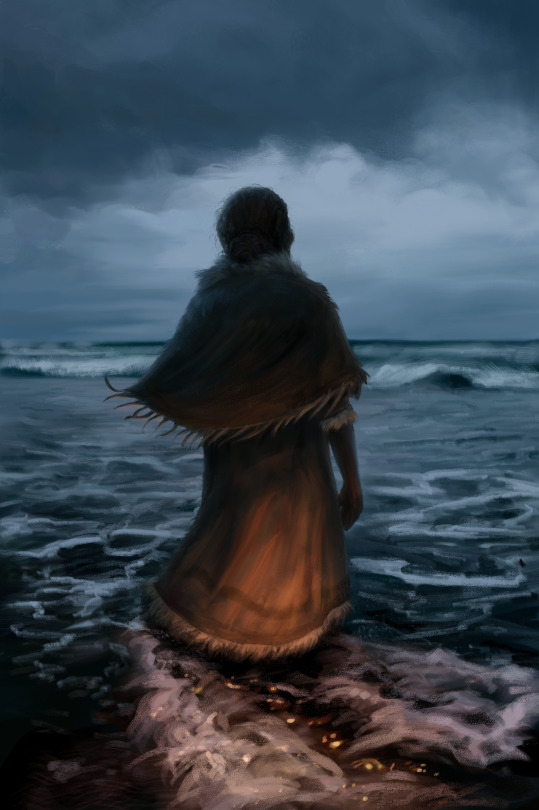
VERGE OF THE WIDER SEA -
My Paleolithic character Nisse at the edge of the western ocean.
[old art]
#paleoblr#paleolithic oc#paleoart#gravettian#aurignaican#My art#stone age#landscape#Prehistoric oc#prehistoric europe#art#artwork#digital art#prehistory#original character art#original character#nisse
3K notes
·
View notes
Photo
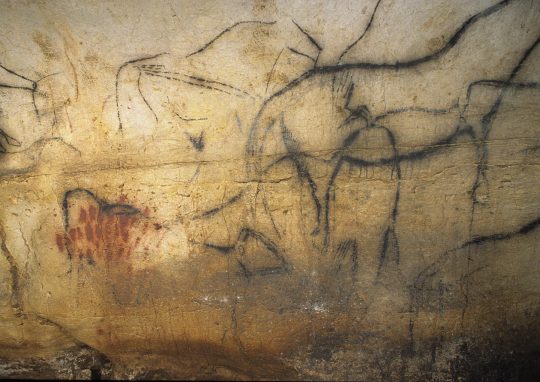

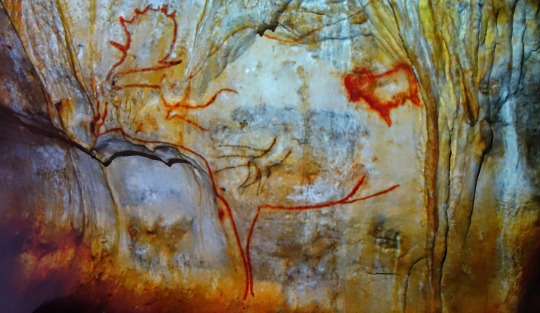
You cannot visit the caves at Lascaux or Chevaut to see the ice age cave art but there are several other caves in France where you can still go and see the art in person. I have been fortunate enough to visit three. In 2007 I visited the cave of Niaux in the Pyrenees mountains. The Magdalenian art of horses, wisent and even a weasel date to 17,000-11,000 ybp. The second was the cave of Pech-Merle in Occitania 2012 which mostly has Gravettian art from 21,000-33,000 ybp. The horses here are spotty and there are also paintings of wooly mammoths. The third was the cave of Cougnac in 2017, also in Occitania which has art from both the Gravettian and Magdalenian periods. The most impressive art here are the depictions of an ibex, and of a large elk or Megaloceros containing a human figure’s hindquarters.
These paintings are inconceivably old and put us in touch with the origins of Europe and the first men - a life changing experience. I doubt they will remain open to the public forever...
#cougnac#occitanie#gravettian#lascaux#pech-merle#niaux#cave art#ice age#paleolithic#cave paintings#wooly mammoth#french history#Magdalenian
127 notes
·
View notes
Text


I’ve got a few WIPs on the way right now, so here’s a brief preview of two of them, with the one on the left being a Homo erectus man carrying a freshly hunted deer, and on the right, we have a Homo sapiens man from the Gravettian culture!
#paleoanthropology#paleoart#homo erectus#homo sapiens#gravettian#paleolithic#human evolution#early humans#hominids#hominins#hunter gatherer#stone age#wip#art wip#current wip#wip stuff#wip tag#work in progress#my wips
2 notes
·
View notes
Text
Gravettians
0 notes
Text
Russian teens get analyzed in BGG threesome
Young teen cock cumshot
jovencita de secu
Milf getting fucked by college student
Blonde wife sucks their plumbers cock
Sexy bbw masterbating with her Hitachi in Las Vegas
Filipino girlfriend getting wrecked
Madison Ivy Gets Dirty in the Shower
Hot teens getting doggystyle fuck from behind
Bajo vestidito nalgas peladas gran culo poca visibilidad a la putita flaca
#fec.#footpick#aquatically#mongrel#Arriba#overfag#amenorrho#microbiota#silico-#Gravettian#machicolation#soapiness#pentagons#chorisis#Osmond#cosmetologist#Kikuyus#portitor#burghermaster#Anous
0 notes
Text
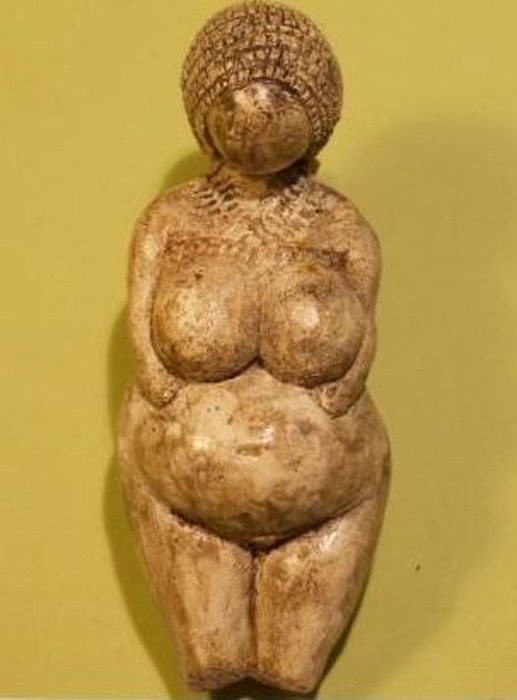
"The so-called "Venus of Kostenki" was recovered from one of the Paleolithic sites on the Don River in Russia. Several figurines from this area share the same traits and indicate a single goddess who is encountered not just in Russia but throughout prehistoric Europe and the Near East.
Her commonalities in so many figurines include the largeness of breasts, belly, thighs, and buttocks; a globe of a head with closely plated hair or more likely a knitted cap; and arms folded under breasts.
Of subtler recurrence, least often remarked upon but of signal importance, is how often her head is tipped downward, not skyward, for the afterlife is not in the sky but in her own womb, the womb of the fatted earth. She is additionally faceless, as the Goddess in her wholeness is unknowable.
This is the standard appearance of the Kostenki goddess figurines; but how nearly identical she is to prehistoric figurines from France to Israel is what startles. It is now known that a series of prehistoric societies were extremely far-ranging in their influences, amounting to a vast society of roaming hunter-gatherers.
The last of these cultures has been named the Gravettian, the mammoth hunters who built sturdy shelters of mammoth bones to stand against even Ice Age storms, or dwelt in caves or semi-underground habitations. They were not a settled culture but did have centers revisited seasonally or periodically, ritual sites or encampments along the trails of migratory animals.
Gravettian art dates from 25,000 to 20,000 BCE or older in Europe (and the Kostenki sites in use from about 37,000 BCE). This surprisingly was a unified culture that lasted a minimum of 5,000 years, with lingering elements until 17,500 BCE, and influences on the following Epigravettian era in Spain, Italy, France, the Balkans and Ukraine.
Their goddess figurines were small because a nomadic existence required portability. When the Ice Age ended, Gravettian culture begins its slow fade into settled agricultural societies, the first cities, the earliest of which still created heavy-set faceless goddess figurines."
~ Jessica Amanda Salmonson
#Venus of Kostenki#Jessica Amanda Salmonson#sacred ways#ancient ways#Goddess#Paleolithic#Don River#Russia#Europe#goddess figurines#Gravettian Culture#25#25000 to 20000 BCE#37000 BCE#Epigravettian#Spain#Italy#France#the Balkans#Ukraine
19 notes
·
View notes
Text
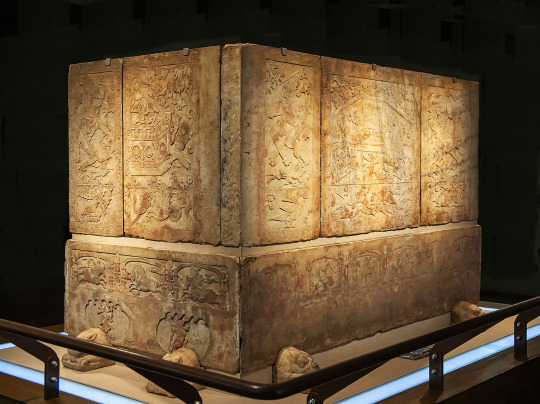

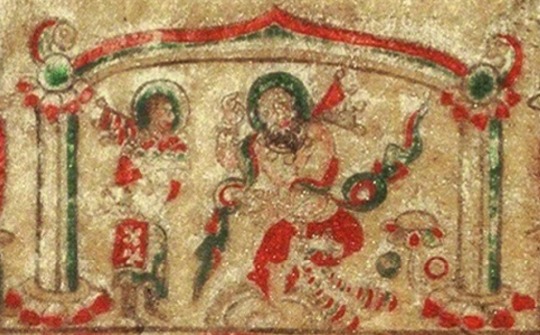

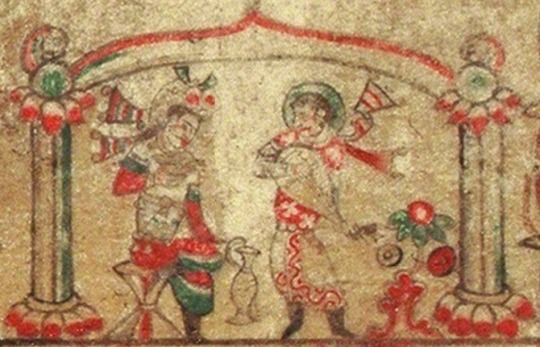




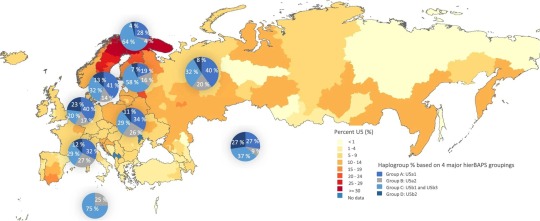
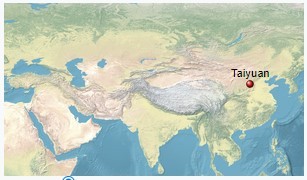
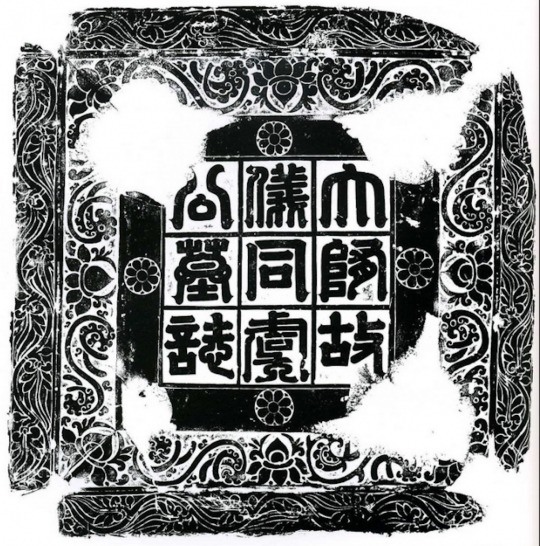
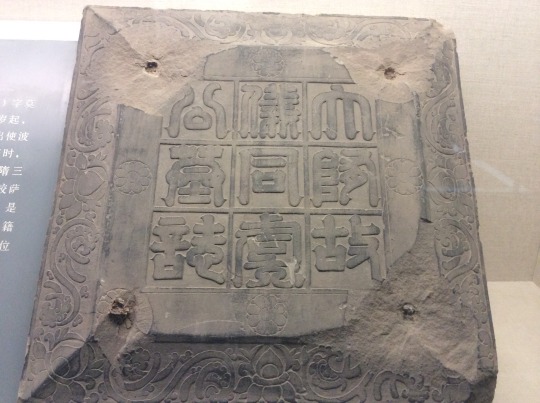

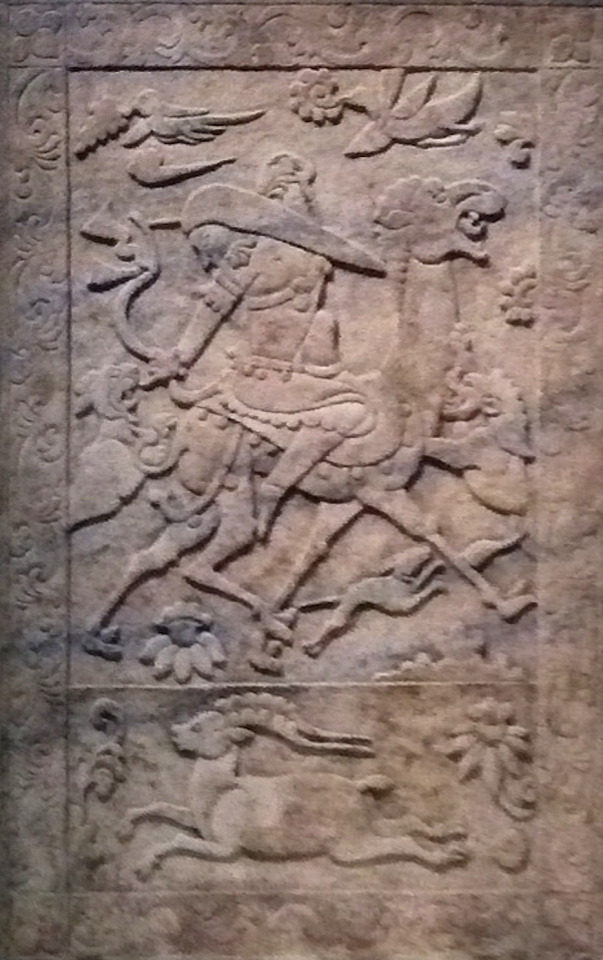
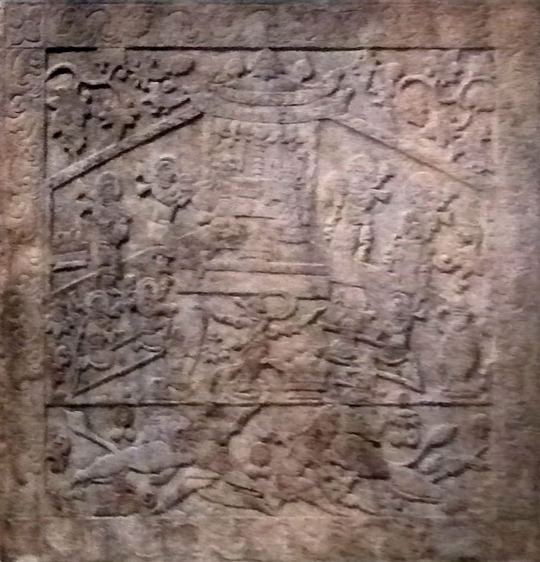
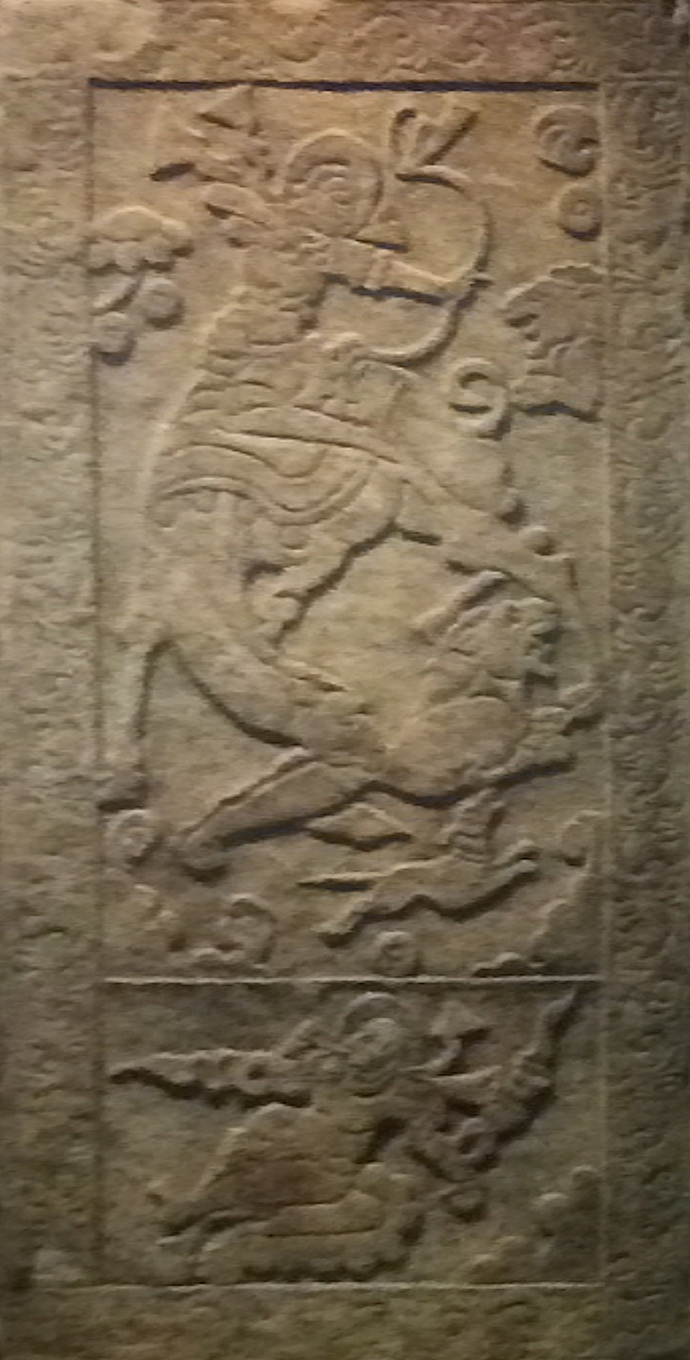
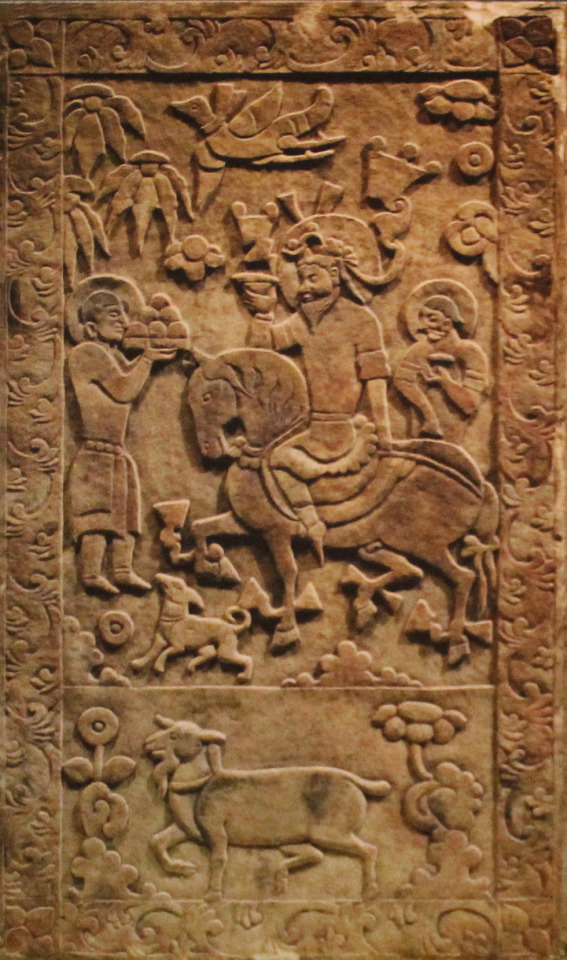
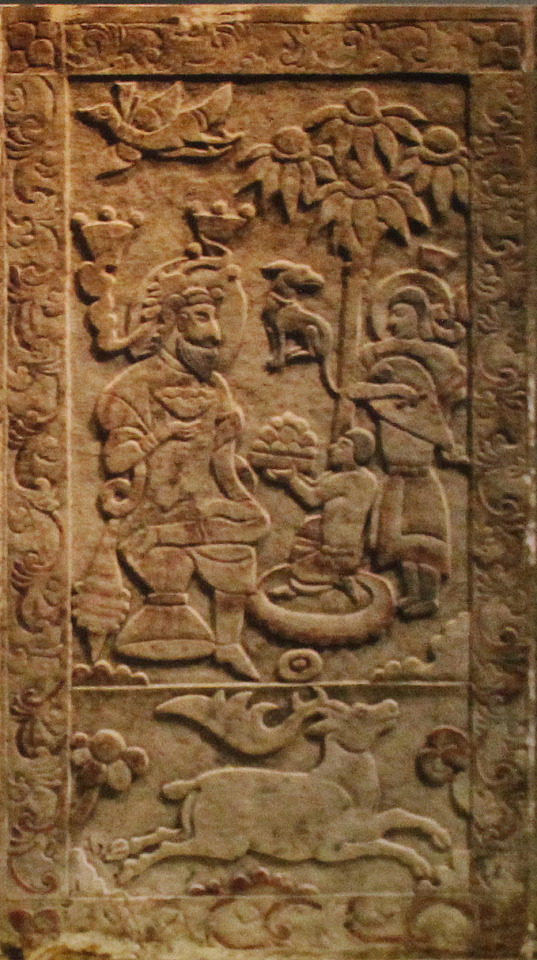
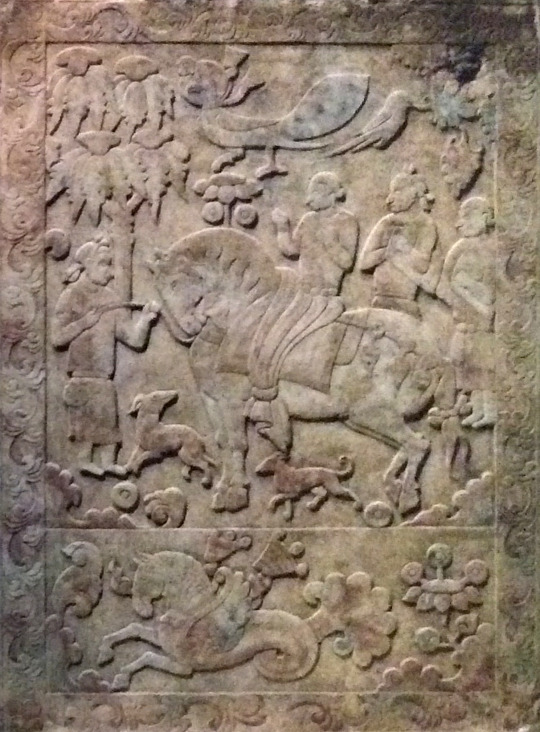
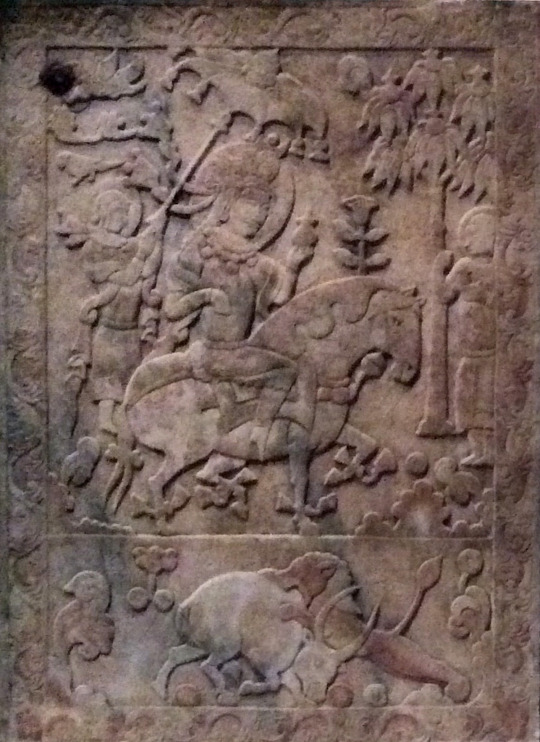
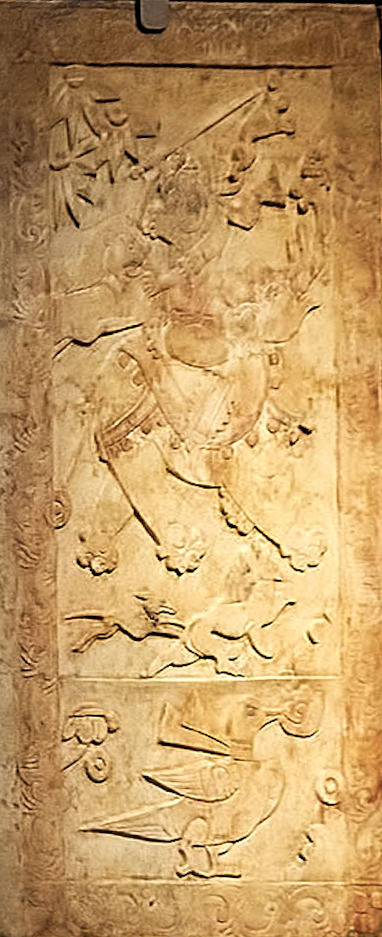
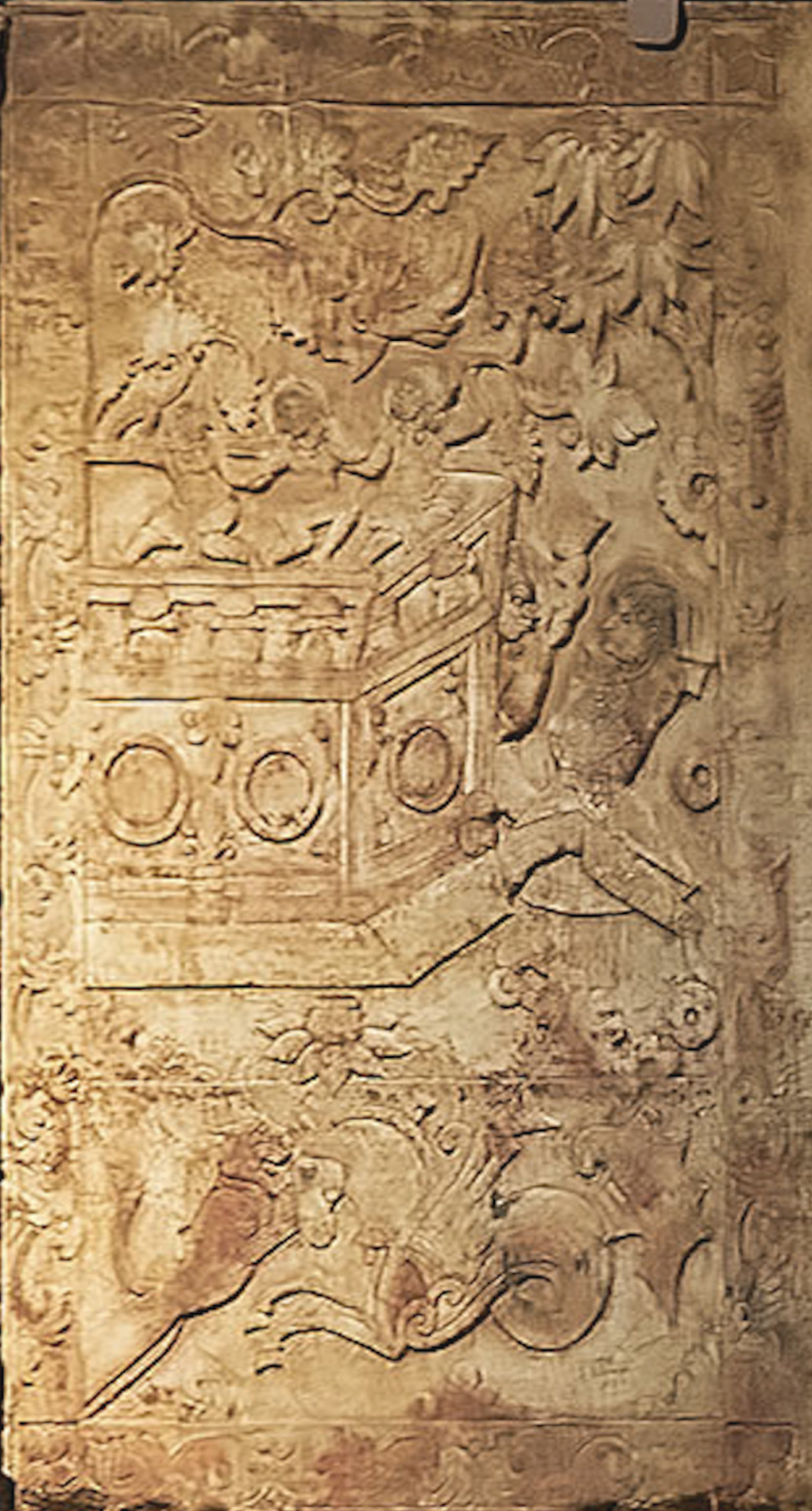

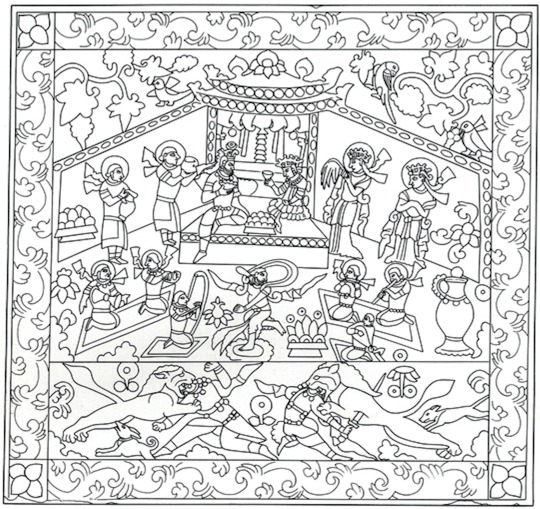
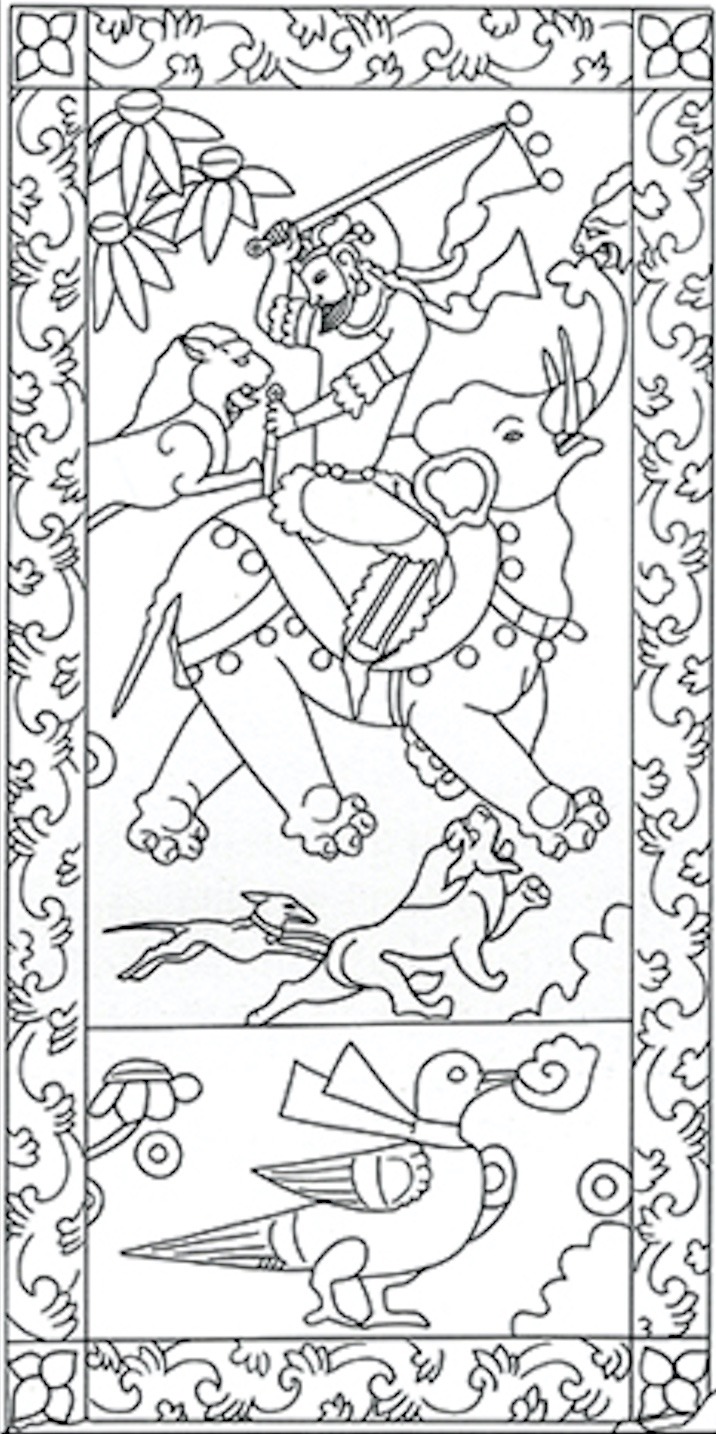
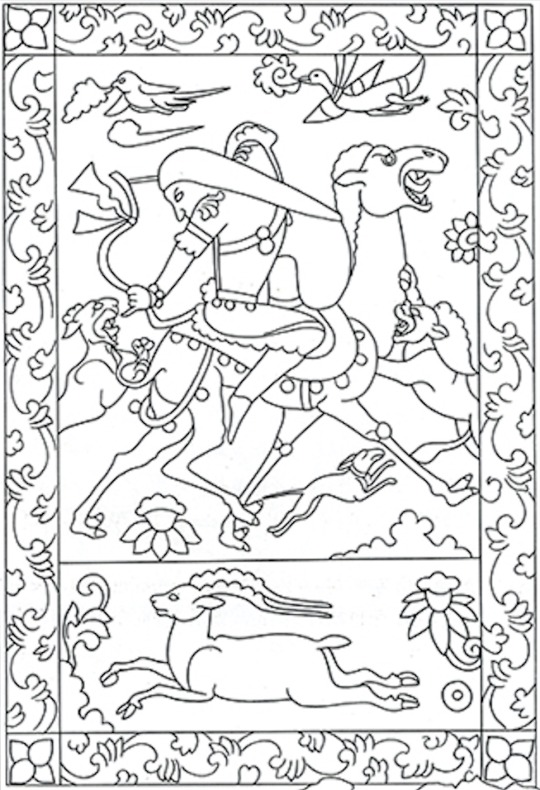



Tomb of Yu Hong 592-598 CE. Link to my blog at bottom with more sources and description of individual images.
This is probably a Sogdian tomb. Interestingly, the man has a haplogroup that was widespread amongst the blue-eyed Mesolithic/Neolithic Western Hunter Gatherers (WHG are probably where blue eyes originated from) and the haplogroup is found today most prominently in Sami, Finns, and Estonians. His wife has a haplogroup found prominently amongst East Asians. Based on her East Asian origins and the inclusion of some Turkic-looking people in the tomb's artwork I would assume she was probably a Turk, herself. The long-haired men without halos (e.g. panel 4) are probably Turks, that was a typical appearance for them during this time period. Men from other surrounding populations such as the Sogdians, Huns, Tocharians, etc. typically kept shorter hair that didn't go past their shoulders. More info:
"The man buried in the tomb went by Yu Hong (Chinese: 虞弘; pinyin: Yú Hóng; Wade–Giles: Yü Hung; 533–592 AD), with Mopan (莫潘) as his courtesy name, who was a Central Asian, probably of Persian or Sogdian origin, and practiced Zoroastrianism. He had settled in Early Middle Period China during the Northern Qi, Northern Zhou and Sui dynasties. This tomb is so far the only archaeological find in the Central Plains region that reflects Central Asian (Western Regions) culture. The epitaph found in the tomb records that he was a noble of the city of Yü-ho-lin / Yuhelin (尉紇驎) in the mysterious Yu country (魚國), assumably for which he is named, because the two characters 虞 and 魚 are homophones.
According to the epitaph, Yu Hong started his career in service of the nomadic tribe at the time, known as Ruru. At the age of 13, he was posted as an emissary to Persia by the Khagan of Ruru, as well as Parthia, Tuyuhun and Yuezhi. Later he went on a mission to the Northern Qi, Northern Zhou and Sui dynasties. He served as chien-chiao sa-pao fu / jianjiao sabao fu (檢校薩保府, lit. “acting director of the office of Zoroastrian affairs”, or “Sogdian affairs”) during the Northern Zhou period. The term sa-pao / sabao (薩保) comes from the Sogdian s′rtp′w, means a “caravan leader”.
He had later served as a provincial governor in the Sui dynasty government, a chieftain of the Central Asian people who had settled in China during that period. Yu Hong died at the age of 59 in 592 AD. His wife survived him by six years, and was buried in the same grave in 598 AD.
A study on ancient DNA reveals that Yu Hong belonged to the haplogroup U5, one of the oldest western Eurasian-specific haplogroups, while his wife can be classified as haplogroup G, the type prevalent in East Asia.
The age of U5 is estimated at between 25,000 and 35,000 years old, roughly corresponding to the Gravettian culture. Approximately 11% of Europeans (10% of European-Americans) have some variant of haplogroup U5.
U5 was the predominant mtDNA of mesolithic Western Hunter Gatherers (WHG) [this is where blue eyes probably originated from].
U5 has been found in human remains dating from the Mesolithic in England, Germany, Lithuania, Poland, Portugal, Russia, Sweden, France and Spain. Neolithic skeletons (~7,000 years old) that were excavated from the Avellaner cave in Catalonia, northeastern Spain included a specimen carrying haplogroup U5.
Haplogroup U5 and its subclades U5a and U5b today form the highest population concentrations in the far north, among Sami, Finns, and Estonians. However, it is spread widely at lower levels throughout Europe. This distribution, and the age of the haplogroup, indicate individuals belonging to this clade were part of the initial expansion tracking the retreat of ice sheets from Europe around 10,000 years ago.
U5 was the main haplogroup of mesolithic European hunter gatherers. U haplogroups were present at 83% in European hunter gatherers before influx of Middle Eastern farmer and steppe Indo-European ancestry decreased its frequency to less than 21%.
Today, haplogroup G is found at its highest frequency in indigenous populations of the lands surrounding the Sea of Okhotsk. It is an East Asian haplogroup. Haplogroup G is one of the most common mtDNA haplogroups among modern Ainu, Siberian, Mongol, Tibetan and Central and North Asian Turkic peoples people (as well as among people of the prehistoric Jōmon culture in Hokkaidō). It is also found at a lower frequency among many other populations of East Asia, Central Asia, Bangladesh, Sri Lanka, and Nepal. However, unlike other mitochondrial DNA haplogroups typical of populations of northeastern Asia, such as haplogroup A, haplogroup C, and haplogroup D, haplogroup G has not been found among indigenous peoples of the Americas."
-taken from Wikipedia
#sogdiana#indo european#ancient china#ancient history#antiquities#history#art#museums#sculpture#statue#ancient#turkic#eurasian#finnish#estonian#finno ugric#genetics
130 notes
·
View notes
Text

My 25 years of palaeoart chronology...
In 2001 I was commissioned by the Creswell Crags Visitor Centre to create a series of paintings illustrating the gorge at different times in the past. These pictures look pretty rudimentary now (I was still learning to paint) but I loved this project so much! Visiting the caves and reconstructing these scenes confirmed to me that this was how I wanted to make my living.
Here are two Gravettian hunters from 28,000 years ago...
#Art#Painting#PaleoArt#PalaeoArt#SciArt#SciComm#DigitalArt#Illustration#Dinosaurs#Birds#Reptiles#Palaeontology#Paleontology
44 notes
·
View notes
Text

The first modern humans to take up permanent residence in Europe settled in Crimea around 37,000 years ago, according to an analysis of their DNA. Within 7,000 years, their descendants gave rise to a culture that included Venus figurines, stone tools and jewelry.
Although anthropologists have long known that some human groups began leaving Africa around 60,000 years ago, most of them were nomadic, not staying long in any particular area. And around 40,000 years ago, a supervolcano in southern Italy wiped out most of the humans and Neanderthals in Europe. These events have led anthropologists to wonder when the ancestors of today's Europeans arrived and decided to settle down.
An international team of researchers now believes they have found Europe's first permanent residents among a collection of skeletons from the site of Buran-Kaya III on the Crimean Peninsula. They published their findings Oct. 23 in the journal Nature Ecology and Evolution.
Buran-Kaya III, a cave site originally discovered in 1990, boasts rich deposits of human activity dating from the Middle Paleolithic to the Middle Ages — a span of at least 50,000 years. But archaeologists are most interested in layers dating from 38,000 to 34,000 years ago, as they include objects such as stone tools and carved bones similar to artifacts from the Gravettian culture. This culture spread across Europe starting about 33,000 years ago, which suggests that Buran-Kaya may be the earliest evidence of permanent settlements in Europe and may have given rise to the Gravettian culture.
To investigate the idea that the Buran-Kaya people were the ancestors of the Gravettian toolmakers, the research team, led by paleogenomics experts Eva-Maria Geigl and Thierry Grange of France's National Center for Scientific Research (CNRS), sequenced the genomes of two male skeletons found at Buran-Kaya that were carbon-dated to about 35,800 to 37,500 years ago.
#crimea#anthropology#since crimea is ukraine the first permanent residences in Europe were Ukrainian /joking#'i have connected the dots' 'you didn't connect shit' 'i have connected them'
40 notes
·
View notes
Text

A 28,000 years old; Stone Phallus, discovered in Germany
The 20cm long, 3cm wide stone object, which was dated to around 28,000 years old, was buried in the famous Hohle Fels Cave near Ulm in Germany's Swabian Jura region. The prehistoric 'tool' was reassembled from 14 fragments of siltstone. Its life size suggested that it may well have been used as a sex aid by its makers, people of Gravettian culture.
4 notes
·
View notes
Text

Flight of the geese.
More ice age oc art.
#my art#prehistoric art#prehistory#prehistory art#Paleoart#prehistoric oc#paleo oc#paleolithic#paleolithic oc#paleoblr#aurignacian#gravettian
90 notes
·
View notes
Text
Prehistory & Prehistoric Art and Ancient Near East
The era of cave painting marks the birth of style. It is nearly impossible to talk about the birth of style without mentioning the “Venus of Wellendorf.” She dates from about 24,000 B.C.E., standing at a mere 4.4 Inches in height.
This sculpture is predominantly focused on fertility, but she is of interest to many fashion historians because of her head. Take a look at her head; what is going on there?
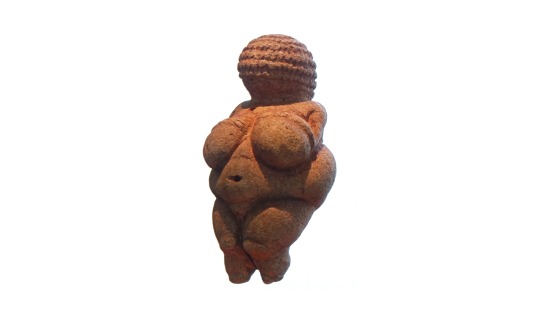
There has been so much speculation. Is it a hat that she is wearing? If it is a hat, was there knitting 24,000 years B.C.? Is it her hair? Is her hair curled, or are these some cornrows? Undeniably this is style.
Just as famous, she is called the “Venus of Brassempouy.” the sculpture dates from about 23,000 years B.C, and again what is going on with her head? Is her hair supposed to represent some braids or plaits? More likely, it’s a headdress intricately made and extremely good-looking!

Is this the birth of fashion? Because both the “Venus of Brassempouy” and the “Venus of Wellendorf” belong to a culture.
Gravettian Culture:
From about 35,000 - 22,000 B.C.E., Gravettian culture comes from northern Europe; We are talking Ice Age business here. We have learned much about how Gravettians dressed because of a man called “The Prince.”
The Prince of Arene Candide was buried with numerous perforated shells and animal teeth. His clothing, the leather of his outfit, had worn away through the millennia, but the rows of shells and teeth remained.


When he was found, all of the shells corresponded to how they looked on his leather tunic, onto his leather pants, and even onto his boots, as well as the skullcap made entirely of shells and teeth.
He did not have to do not have to sew thousands of shells and teeth onto his leather clothing. This was the ice age. They were still nomadic, yet they took the time to do this. Why?
Because it looked good! It shows status, some wealth, some sort of importance. For the period, this work was incredible!
Transition to Present Day:
Some trends from the last five years are resurfacing that emulate the fashion mentioned previously.
This headdress is similar to the one depicted by the “Venus of Brassempouy” as pictured on pop star and fashion designer Rihanna.


Another example is the numerous shell dresses the luxury fashion house Alexander McQueen designed. The usage of shells is reminiscent of Gravettian Culture and how their people would customize their clothing.
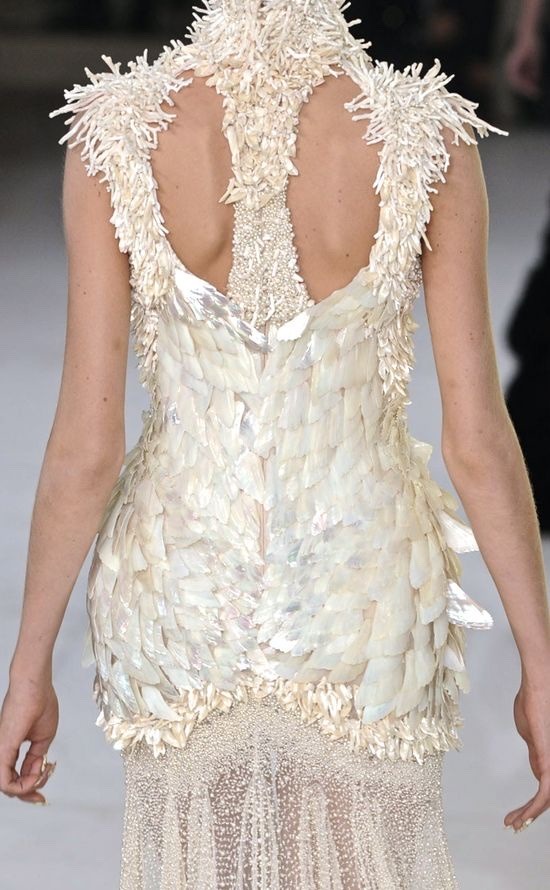
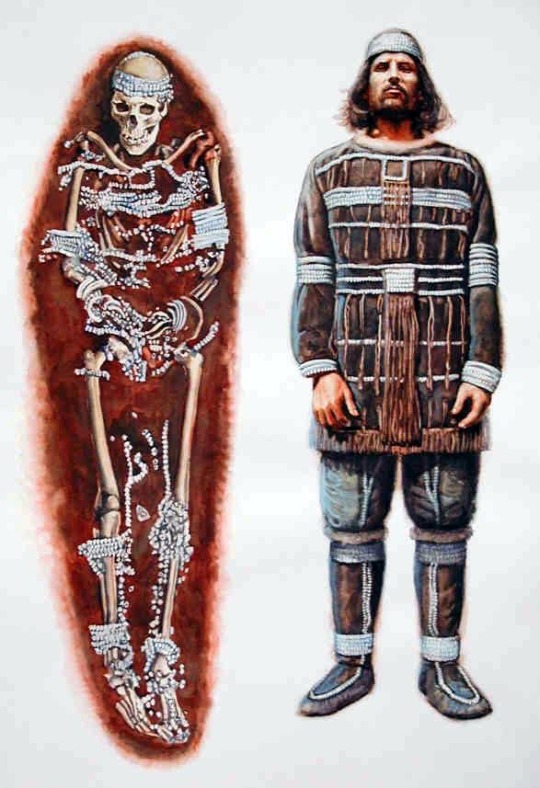
Sources:
https://www.mudifinale.com/en/il-giovane-principe/
6 notes
·
View notes
Text
gravettian-age blogger found entombed deep within a cave, along with fossilized posts
78 notes
·
View notes
Text
god i wish i was born in the gravettian period
9 notes
·
View notes
Text
Venus of Dolní Věstonice (Věstonická Venuše)
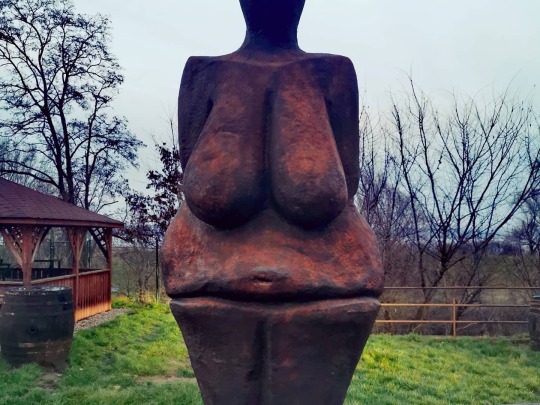
Venus figurine, a ceramic statuette of a nude female figure dated to 29,000–25,000 BCE (Gravettian industry). It was found at the Paleolithic site Dolní Věstonice in the Moravian basin south of Brno, in the base of Děvín Mountain in what is today the Czech Republic. This figurine and a few others from locations nearby are the oldest known ceramic articles in the world
2 notes
·
View notes
Text

Uncovered by a Slovakian farmer ploughing his land in 1930, this figurine is called the Venus of Moravany.
She is made from a mammoth's ivory tusk circa 22,800 BCE, from the Gravettian culture.
#Venus of Moravany#Slovakian#mammoth tusk ivory#22800 BCE#Gravettian culture#Goddess#ancient ways#sacred ways
4 notes
·
View notes